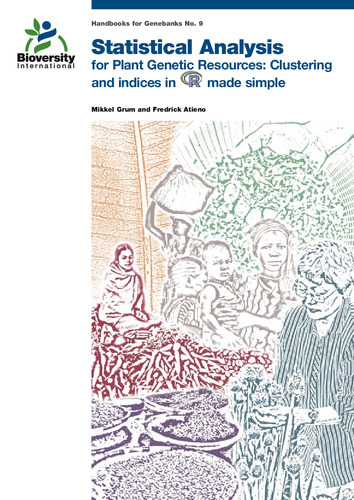Statistical analysis for plant genetic resources: Clustering and indices in R made simple
This handbook aims to give researchers tools and methods to analyse mathematically complex morphological characterization data. R is a powerful software language and environment for statistical computing and graphics, developed by volunteers from around the world, working together over the Internet. The core development team consists of fewer than twenty programmers who maintain and develop the general R environment, with contributions from many others. A much larger number of contributors write individual statistical packages for R that address specific needs. Statisticians and researchers write many of these statistical packages for their own research purposes, ensuring that R is in the forefront of developments in statistics. Another of R's strengths is the ease with which well-designed publication-quality plots can be produced, including mathematical symbols and formulae where needed. On the down side, if you are used to pointand-click interfaces, you may find that R has a relatively steep learning curve. As one of the developers of R once put it, R is not designed to make easy things simple, but to make difficult things possible. Nonetheless, several projects are working on making R easier to use, and interfaces should improve in the near future. We would not propose R had we not found that it has many facilities useful to the analysis of plant genetic resources data, facilities not commonly found in other statistical packages. We also believe that with a step-by-step guide, providing examples of typical analyses required in plant genetic resources research, most researchers will be able to implement such analyses quite simply on their own data. This tutorial provides such a guide, beginning with simple examples that soon demonstrate the power of R, and allows users to gradually become acquainted with the more complex aspects. Just enough explanation of the statistics is given for readers with a basic understanding of the subject to understand the output of the analyses.

